-
Nortek Vector ADV
-
The Nortek Vector ADV is an acoustic device that uses the Doppler effect to accurately measurement water velocity and turbulence characteristics at a specified point. The Vector is capable of measuring frequencies up to 64 Hz and is equipped with an internal motion unit which measures the acceleration, magnetic heading and rotation of the device. The device is rugged and long data cables may be purchased making it ideal for field measurements. This device is the ADV of choice for the CHTTC when it comes to resource characterization measurements. For more information about the Nortek Vector click here.

-
Instrumentation
-
Nortek Vectrino Plus ADV
-
The Nortek Vectrino Plus ADV is an accoustic device that uses the Doppler effect to accurately measurement water velocity and turbulence characteristics at a specified point. The Vectrino Plus is capable of measuring frequencies up to 200 Hz making it ideal for lab measurements. This device sometimes requires the addition of particles to the flow to be able to properly gather data. At times, adding particles to river flow is difficult, due to environmental concerns and the supporting structure to do so. For this reason, this device is not preferred for river measurements. For more information about the Nortek Vectrino Plus click here.
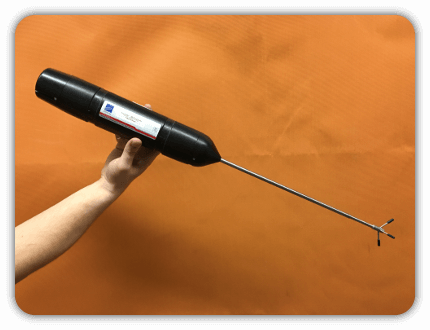
-
-
Sontek M9 ADCP
-
The Acoustic Doppler Current Profiler is an acoustic device that uses the Doppler effect to measure the water velocity throughout a column of water, from the surface to the bed. The CHTTC owns an M9 model developed by Sontek that records three dimensional data throughout the water column at a frequency of 1 Hz. The resolution and range are dependent on the depth of the water column and are internally set by the device. For more information about the Sontek M9 ADCP click here.
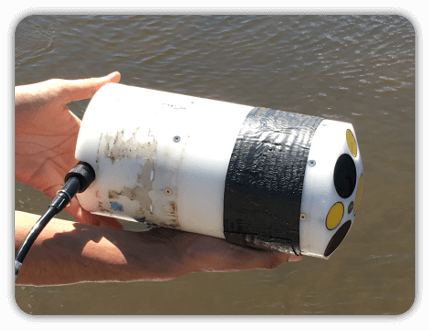
-
-
Teledyne ChannelMaster HADCP
-
The Horizontal ADCP is a specialized ADCP device developed by Teledyne Research Instruments. This device uses two acoustic beams to scan across a water channel to get streamwise and spanwise velocities across a span of river. The measurements provide an idea of where the maximum flow is located across the span of the channel. The HADCP is a robust instrument that has adjustable resolution and range, within certain limits. For more information about the Teledyne ChannelMaster HADCP click here.

-
-
Valeport Current Meter Model 106
-
The current meter uses an impeller to measure the speed of water flow. This instrument has the capability to use on board batteries to power the instrument and record autonomously for long periods of time. This is useful for long term flow studies, as well as flow measurement during winter periods as the instrument can be installed before winter sets in and the device can be left to autonomously record over the winter time period. It can also be done to perform long term recording of velocity for detailed knowledge of how flow in a particular area changes with time. For more information about the Valeport Current Meter click here.

-
-
FP101 Global Flow Probe - Handheld Flowmeter
-
The global flow probe is a simple device that measures the velocity of water flow. This handheld device uses an impeller to measure the speed of the flow. To use the device, the operator holds it with two hands and places the impeller end of the device into the water flow. The velocity can be measured from the gauge at the opposite end of the device. This device is good for getting an idea of flow speeds before detailed measurements are taken. For more information about the Global Flow Probe click here.
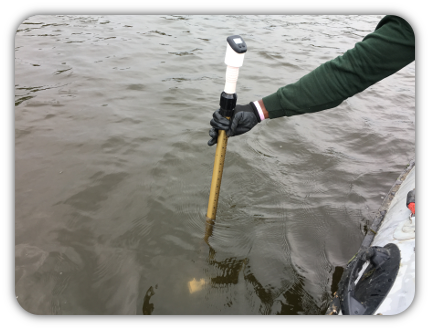
-
-
ARIS Explorer 3000 Sonar Camera
-
The soundmetrics ARIS Explorer 3000 sonar camera comes with a motorized mount which allows the control of the direction of the camera, such that the operator can point it in whichever direction is required for the application. It has unique features, such as the ability to apply filters to clarify the picture, an intensity slider which concentrates the view to specific bands of intensities, and finally the ability to adjust the acoustic pulses to suit the environment. The camera allows the CHTTC to diagnose underwater problems or monitor turbines beneath the water's surface. For more information about the ARIS Explorer 3000 click here.

-
-
VMP-250 Turbulence Profiler - Shear Probe
-
The shear probe uses piezo-electric sensors to detect velocity fluctuations, turbulence, in a water column. The instrument is deployed over the side of a water craft and allowed to descend to the bed of the water body. As the instrument descends, it collects pressure and velocity fluctuation data onboard. The device is then retrieved and post-processed to extract the data and resolve the collected data into usable results. This instrument is not designed to collect mean flow data and only collects turbulence data in turbulence scales between 0.01 and 1 m. For more information about the VMP-250 Turbulence Profiler click here.

-
-
Humminbird 898c HD SI Combo
-
The Humminbird 898c fishing system is a multi-purpose surveying system. Using sonar, the Humminbird system measures and outputs the depth of the body of water to a monitor visible to the boat driver providing a real-time read out of the depth, as well as showing imagery of objects underwater. The system also contains a GPS receiver that allows for position information to be displayed on the monitor as well and navigation charts can also be uploaded to the device via SD card. Finally, all screens on the monitor can be recorded and output to an SD card, which allows for bathymetric surveys. For more information about the Humminbird 898c HD SI Combo click here.

-
-
Xsens MTi-100 710-GNSS
-
The Xsens MTi-100 710-GNSS is a device which records instantaneous GPS, acceleration and magnetic orientation information, as well as velocity information. This device is useful for tracking the motion of boats during measurement, as well as for remote monitoring of devices. It can also be used to measure vibration on solid marine structures, which is useful in the design of marine support structures. This allows for greater understanding in how high-velocity turbulent flow causes vibrations on members in the water, and how this may affect velocity measurements. For more information about the Xsens MTi-100 series click here.

-
-
TR-ORCA Hydrophone
-
TThe hydrophone is a device which can record sound under water. This is useful for diagnosing underwater issues. For instance, a turbine creating a strange noise that may otherwise go undetected can be heard with this device. This can potentially save a damaged piece of equipment before the damage gets too severe. It can also be an indication of noisy bearings needing to be changed. Additionally, the device can be used to record the sounds of wildlife in the environment. This can help assess how the local wildlife reacts to underwater structures. For more information about the TR-ORCA Hydrophone click here.

-
-
Load Cell and P1 Wireless Display
-
The load cell is a device used to measure tensile loads. On each end of the device, a shackle is attached. The tensile load is then applied to both ends of the device, via the shackles. The device then reads the applied load and the data is sent to a handheld data receiver. Here the load can be read off and recorded. The load cell can be calibrated to different weights and has a maximum load of 5 tons. This device is useful for measuring drag loads marine cables, such as mooring lines. For more information about the load cell click here and for more information about the wireless display click here.
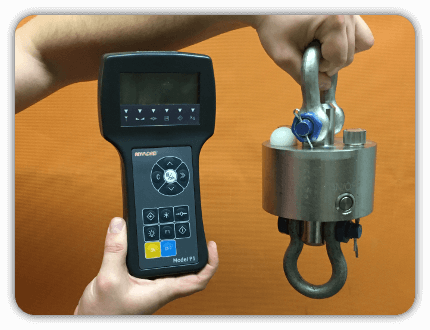
-
-
DT85 DataTaker
-
The CHTTC has two data taking devices which allow for the logging of data from different input devices. They can be used to store data remotely, without an operator on a computer. For example, they are being used to log turbine output data from an operating turbine, as well as flow data from a separate device. The data taker can take these two inputs and store the data remotely, for extended periods of time. This allows for remote monitoring of operating turbines and flow measurement instruments, to minimize monitoring costs and maximize the amount of collected data. For more information about the DT85 DataTaker click here.
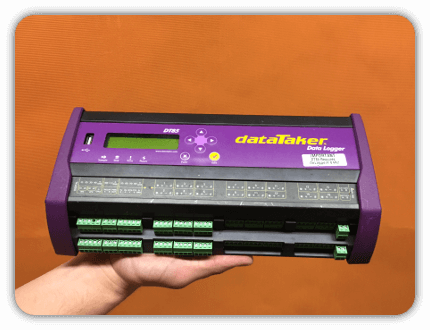
-
-
Dell Extreme Rugged Laptop
-
The Dell Extreme Rugged laptop is the computer of choice when it comes to taking field measurements. This computer has multiple input ports to support most measurement devices, whether it be via serial or USB input. It features four USB ports and two serial input ports. The computer is outfit with a backlit screen, allowing for easy viewing, even when in direct sunlight. The screen is also touch-capable, allowing for quick selection of items or programs without having to use a mouse or trackpad. The laptop comes with padded corners and a hardy exterior shell, which protects against falls and impact damage. Finally, the laptop is also splash-resistant, which making it ideal for field measurements in a marine environment.
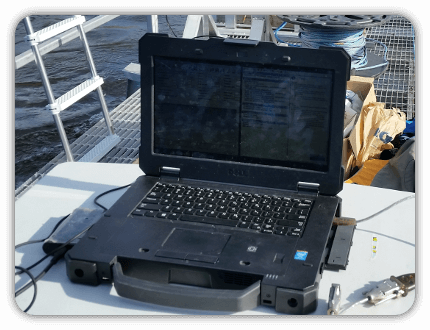
-

